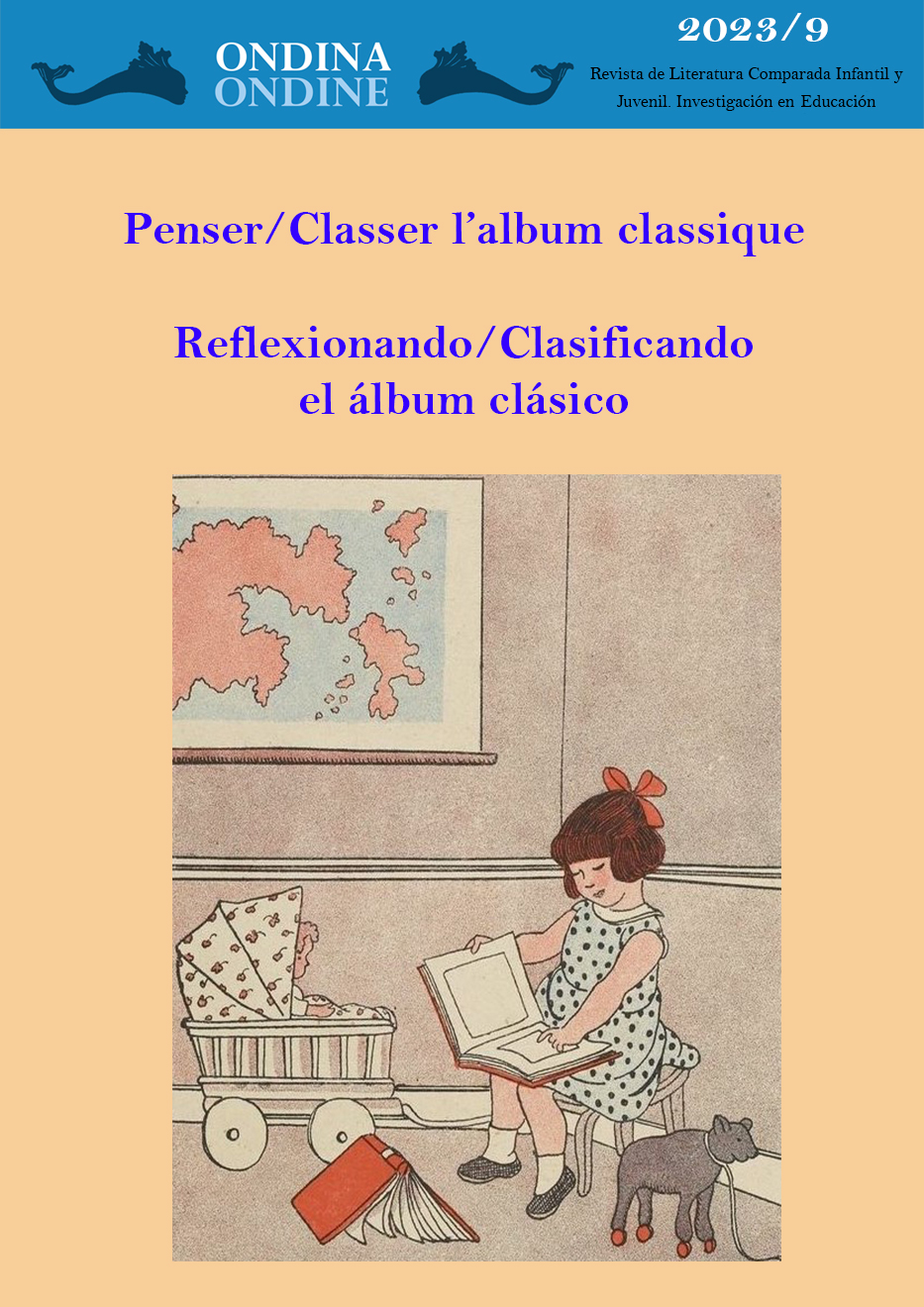Fictionn al narratives in picture books at pre-school: classicisation and patrimonialisation
DOI:
https://doi.org/10.26754/ojs_ondina/ond.202397295Abstract
This article aims to analyse the processes of classicisation and patrimonialisation of fictional storybooks in French pre-schools. Since the work of Alain Viala in 1992 on the question of classics, many researchers à Hélène Weis in 2000, Brigitte Louichon in 2008 and Violaine Houdart-Merot in 2012, have put the definitions of the terms « classic » and « heritage » in tension.The latter appeared for pre-school in 1992 in the Maitrise de la langue (MEN, 1992). As the school is considered as an instance of classicisation (Rouxel, 2010), the aim is to show how preschool teachers, by using albums to compose corpora and to think about their teaching of reading, have participated and are participating in the classicisation and patrimonialisation of a certain number of stories. The albums will be considered as classicised and constitutive of a heritage under the following conditions: recurrence in classroom practice, but also recurrence of the corpus in successive surveys from 1948 to 2019 or in educational works and finally in the Selection pour une première culture littéraire (MEN, 2013) where, like the cycle 3 and cycle 2 lists, the terms classic and heritage albums appear. Indeed, it should be noted that in the absence of textbooks, anthologies and an official corpus, preschool teachers had to adopt an implicit corpus - until 2013, when the Selection pour une première culture littéraire was published. In this perspective, the word "corpus" will designate the selection of works, according to an operation that amounts to cutting out of the whole. We will highlight the different roles of the corpus in the selection of works, and the different ways in which the corpus is used to express the values of the society, the profession and the individual. We will highlight the different roles played in these processes by the institution, the publishers of albums, the librarians, the educational press, the AGEEM, the critics and the research. We will thus try to describe, by trying to separate the various components, the "ecosystem" of the We will therefore try to describe, by trying to separate the various components, the "ecosystem" which links teachers, publishers, librarians and the institution and which leads to the classicisation of certain albums. Indeed, the analysis of this dynamic circle of
The analysis of this dynamic circle of actors who gravitate around reading in kindergarten classes and the surveys followed by interviews on the books that are read there make it possible to highlight and explain the processes of classicisation and patrimonialisation of certain books.
These albums have the ability to reach two distinct audiences of interest, the teachers who transmit them and the pupils who receive them, and this sometimes for fifty years, their use remaining relevant in the eyes of teachers. We will therefore try to explain
their omnipresence and durability in teaching practices. What literate memory, finally for the nursery school?
Keywords: children picture book, literary corpus, classic, heritage, pre-school.
Downloads
Downloads
Published
How to Cite
Issue
Section
License
Copyright (c) 2023 Andreani Marie-Dominique

This work is licensed under a Creative Commons Attribution 4.0 International License.

Creative Commons License 4.0.
Los autores son los depositarios del copyright Creative Commons
Accepted 2022-11-20
Published 2023-12-29




